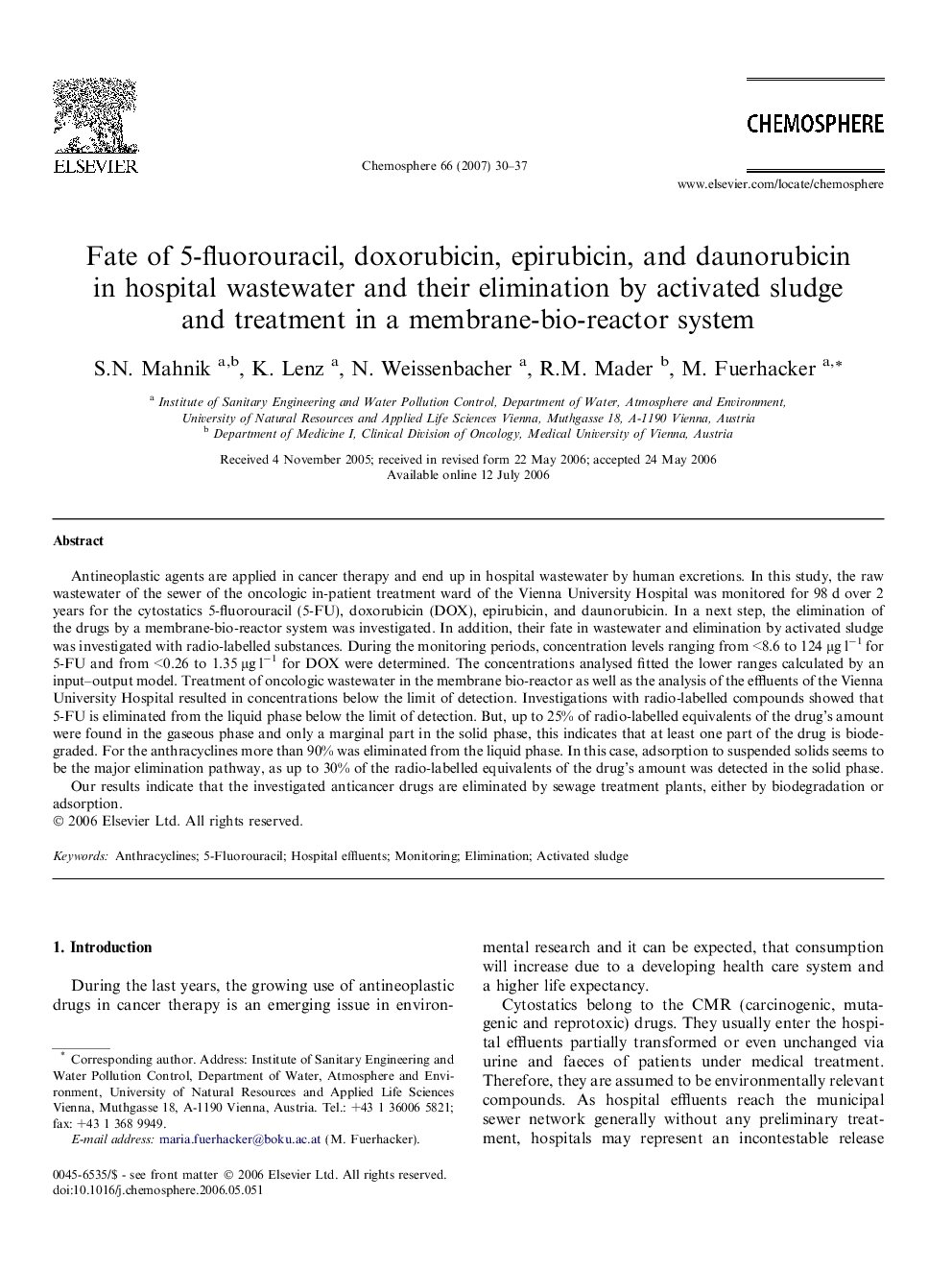| کد مقاله | کد نشریه | سال انتشار | مقاله انگلیسی | نسخه تمام متن |
|---|---|---|---|---|
| 4416483 | 1307785 | 2007 | 8 صفحه PDF | دانلود رایگان |

Antineoplastic agents are applied in cancer therapy and end up in hospital wastewater by human excretions. In this study, the raw wastewater of the sewer of the oncologic in-patient treatment ward of the Vienna University Hospital was monitored for 98 d over 2 years for the cytostatics 5-fluorouracil (5-FU), doxorubicin (DOX), epirubicin, and daunorubicin. In a next step, the elimination of the drugs by a membrane-bio-reactor system was investigated. In addition, their fate in wastewater and elimination by activated sludge was investigated with radio-labelled substances. During the monitoring periods, concentration levels ranging from <8.6 to 124 μg l−1 for 5-FU and from <0.26 to 1.35 μg l−1 for DOX were determined. The concentrations analysed fitted the lower ranges calculated by an input–output model. Treatment of oncologic wastewater in the membrane bio-reactor as well as the analysis of the effluents of the Vienna University Hospital resulted in concentrations below the limit of detection. Investigations with radio-labelled compounds showed that 5-FU is eliminated from the liquid phase below the limit of detection. But, up to 25% of radio-labelled equivalents of the drug’s amount were found in the gaseous phase and only a marginal part in the solid phase, this indicates that at least one part of the drug is biodegraded. For the anthracyclines more than 90% was eliminated from the liquid phase. In this case, adsorption to suspended solids seems to be the major elimination pathway, as up to 30% of the radio-labelled equivalents of the drug’s amount was detected in the solid phase.Our results indicate that the investigated anticancer drugs are eliminated by sewage treatment plants, either by biodegradation or adsorption.
Journal: Chemosphere - Volume 66, Issue 1, January 2007, Pages 30–37